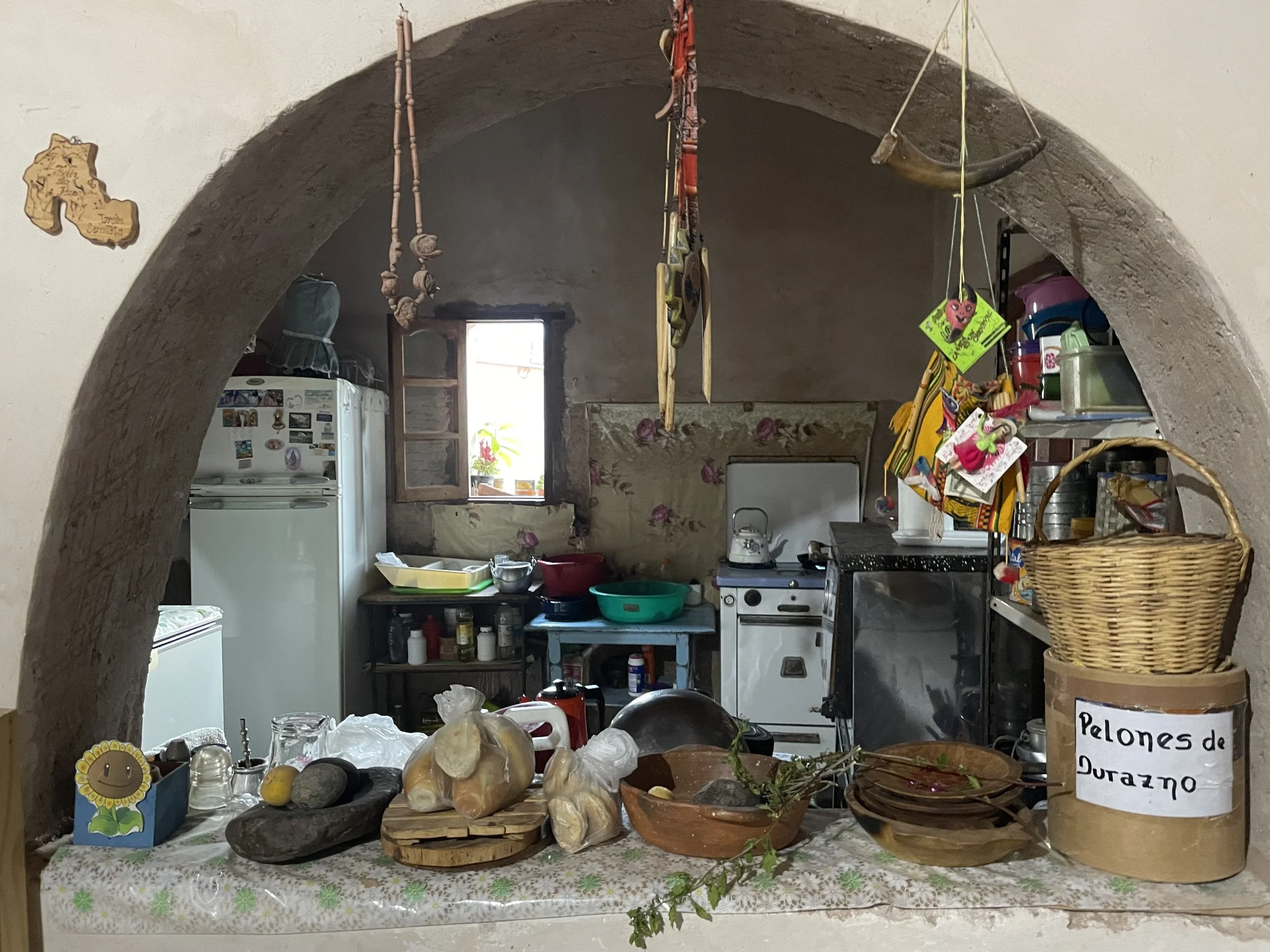Celestina de Tumbaya
A medicinal herbs expert, a human rights advocate, a de-colonization activist, and a mother with a passion for creative baking using Andean ingredients; Celestina Avalos is all of that and more.
I first went to Tumbaya to learn about the region’s medicinal herbs. Say Hueque gave me the name and phone number of a woman named Celestina Avalos who teaches about medicinal herbs, as part of my trip to northern Argentina. I knew there was more to see in the north after the visit Say Hueque booked for me at Pristine Camps in Salinas Grandes. I wanted to meet Indigenous women and learn about what life was like for them. I was also interested in comparing life in the Argentine altiplano with life in Peru.
Specifically, I wanted to know how different the herbs in the Argentine altiplano are from the herbs in the highlands around Cusco. In 2022, I participated in a medicinal herbs workshop at the Parque de la Papa, about two hours from Cusco. After Celestina settled me at her dining room table with a cup of tea, I found out that she has also visited Cusco and the Parque de la Papa. She came to Peru as the Argentine representative for a collaboration between Andean herbs specialists.
Our common love for Cusco and interest in herbs and potatoes, established, she told me more about her life before she taught me about the bowls of herbs that she had assembled on the dining room table for me.
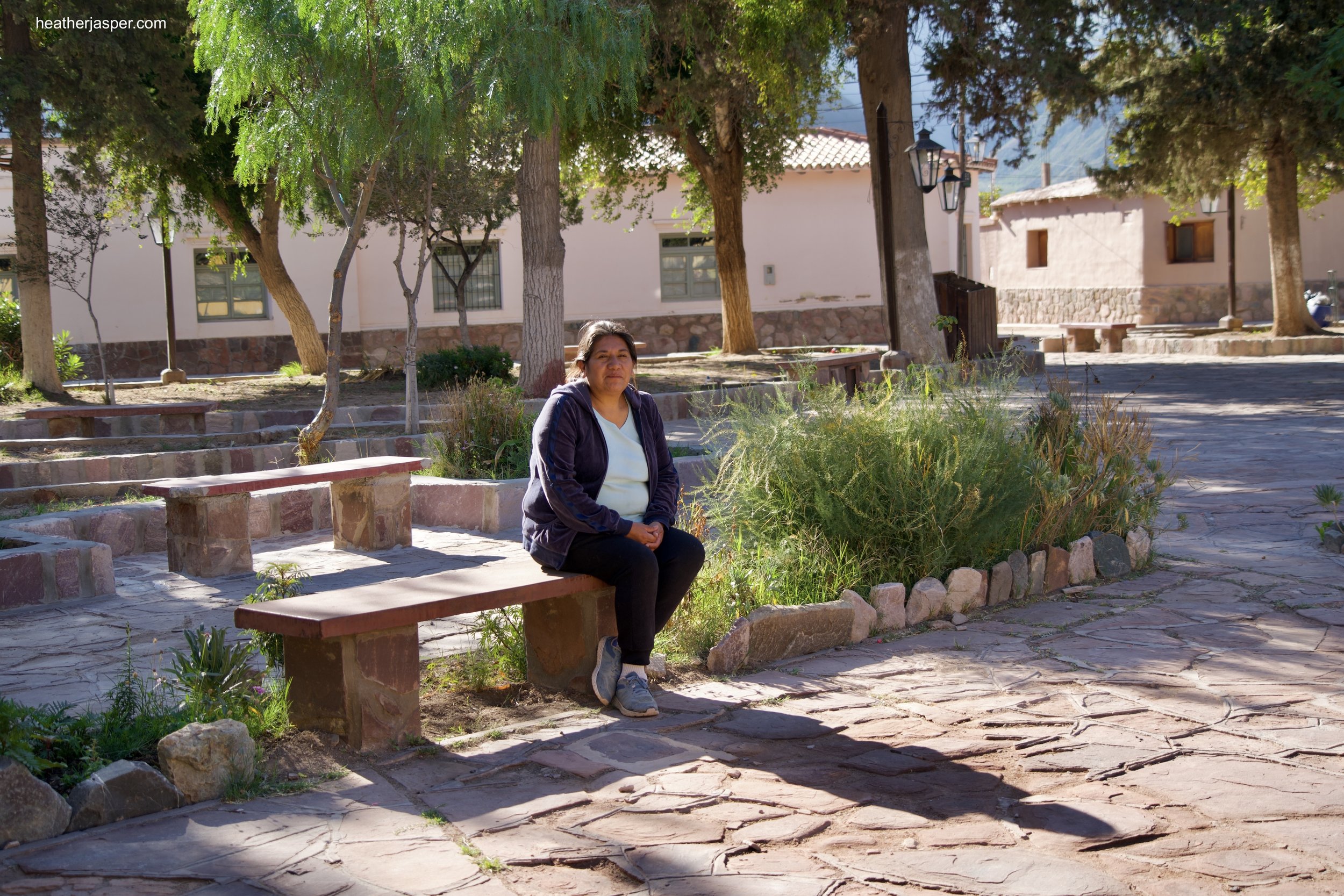

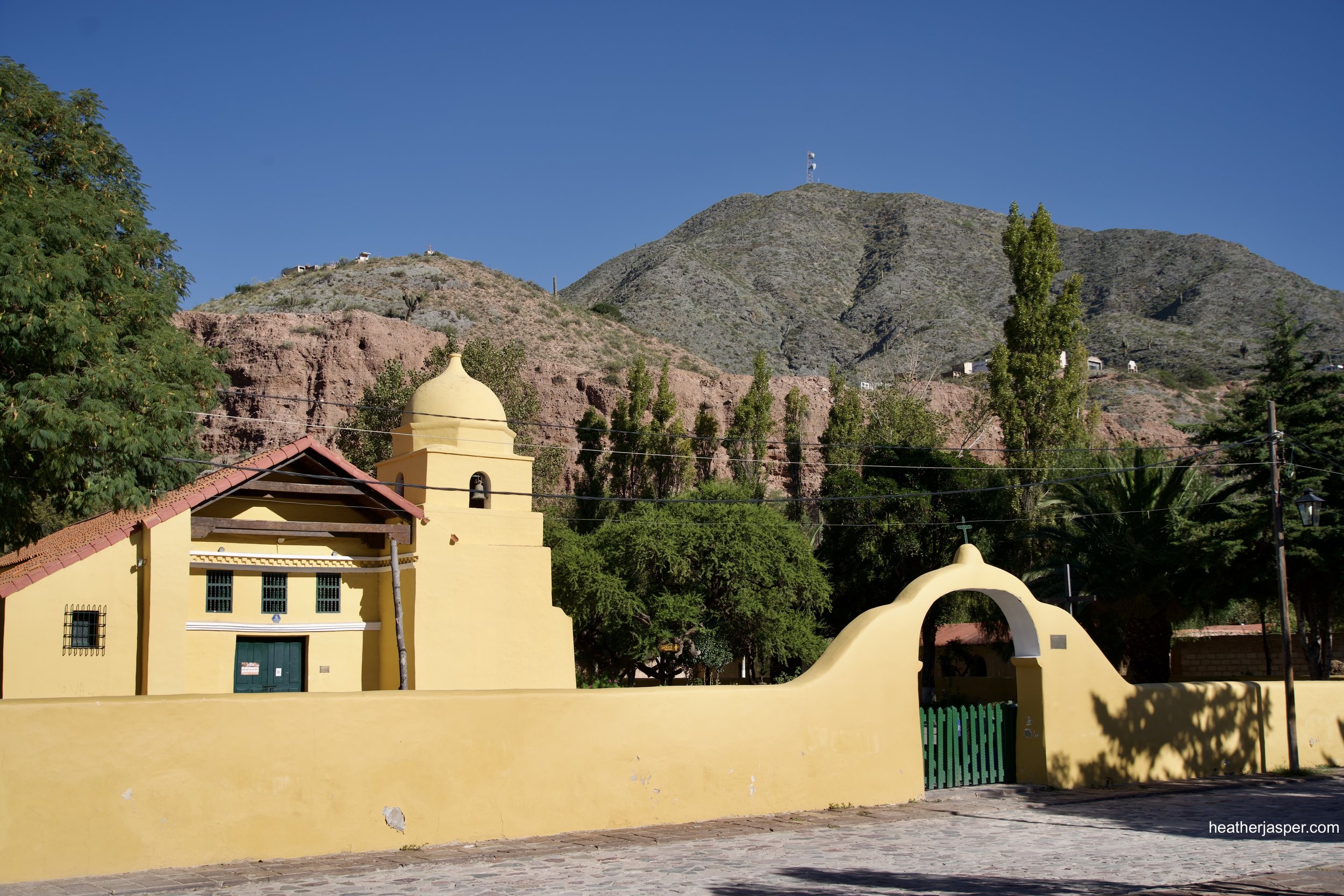
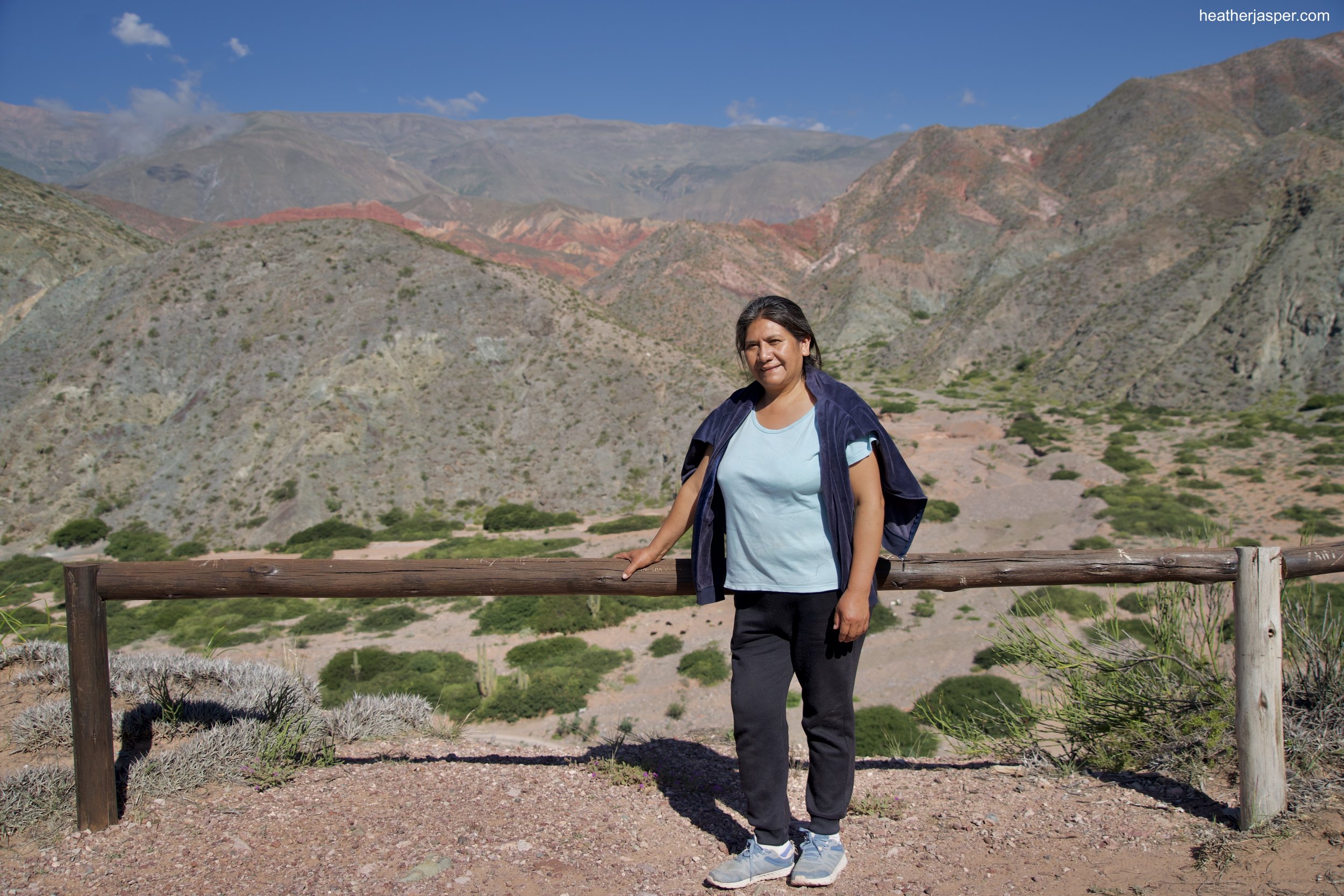
Celestina Avalos was born and raised in Tumbaya, in the northern Jujuy province of Argentina. Her parents, grandparents, great-grandparents, and ancestors for hundreds of years suffered under the encomienda system set up during the colonization period.
None of that surprised me. I’ve learned a lot about the Spanish colonization of South America both as a student and teacher of Spanish in the US, then as a resident of Peru since 2019. What shocked me was the date that Celestina managed to end the system: 1994.
Until 1994, residents of Tumbaya were required to work for free for the “patrón" under threat of eviction. They also had to pay an annual tribute to the patrón for the privilege of living on his land and working for him. About sixty families fought with her but since getting their land back, at least 150 families have returned to the community.
How did that continue until 1994? Except for the dictatorship from 1976 to 1983, Argentina has been a democratic country that supposedly supported human rights. I don’t have an answer to that yet. What I do know is that Celestina fought hard to get the land expropriated from the patrón and given back to the Indigenous people who have lived there since long before the Spanish invaded 500 years ago.
The Tumbaya Church
Celestina told me that the Catholic church helped in the fight against the patrón, named Pablo Viviani. The resident priests at the time were from Italy and Portugal and both supported the Tumbaya families’ fight to get their land back and end the encomienda system. The church even paid for the lawyers who brought the case against the Argentine government.
I was so fascinated by her stories, that I almost forgot about the herbs she had gathered for me.
When we started to go through them, I only recognized a couple. Muña is a wild Andean mint that grows throughout the mountains around Cusco and is an herb that has always represented the Peruvian Andes for me. I was surprised to see the same herb, with the same name, on Celestina’s table. Muña gives energy and is a great herb to drink in the morning or after lunch. Another familiar one was airampo, the seeds of a cactus that give water a distinctive fuchsia color when boiled. I didn’t know airampo’s medicinal properties, which Celestina explained lower fevers and work like ibuprofen.
Most were new to me. Rica rica gives energy, without caffeine. Espina amarilla lowers blood sugar and is good for diabetics. Vira vira calms a heart that’s beating too fast. Suico helps upset stomaches. Areyuyu aids in digestion. Coba is another energizer. Cedrón is a tranquilizer.
Crushing Walnuts
After the lesson on medicinal herbs, she put me to work crushing walnuts, while she mixed cake batter with purple corn flour. When I asked where she learned to bake with purple corn, she laughed. She created the recipe herself. Nobody else bakes with purple corn.
She made two cakes in bread tins, one with the walnuts I’d crushed and one with white chocolate. She put the cakes in the oven, told her son to take them out in half an hour and we set off on the first of several walks I took with her over the three days I stayed at her home.
Tumbaya today is growing, and not because there are jobs or much to do there. After centuries of families leaving to avoid the cruel treatment and forced labor from the patrón, their children are coming back. When the community was granted their land back in 1994, the forty families who were left got to work dividing up the land in equitable ways based on mutual agreements. As people have come back, they have been allocated land accordingly.
It's been almost 30 years and Celestina thinks that the land has been managed well. Enough families have come back that it seems unlikely more will come. It’s time for the families who are there now to get individual titles to the land they farm and their houses.
While communal land ownership may work well in other countries, it’s not working well for the families in Tumbaya. Their situation is such an anomaly in Argentina, that it’s preventing them from accessing some of the basic rights other Argentines have. Any other homeowner in Argentina has the right to apply for a loan based on the property value of their house or farmland. The people of Tumbaya can’t.
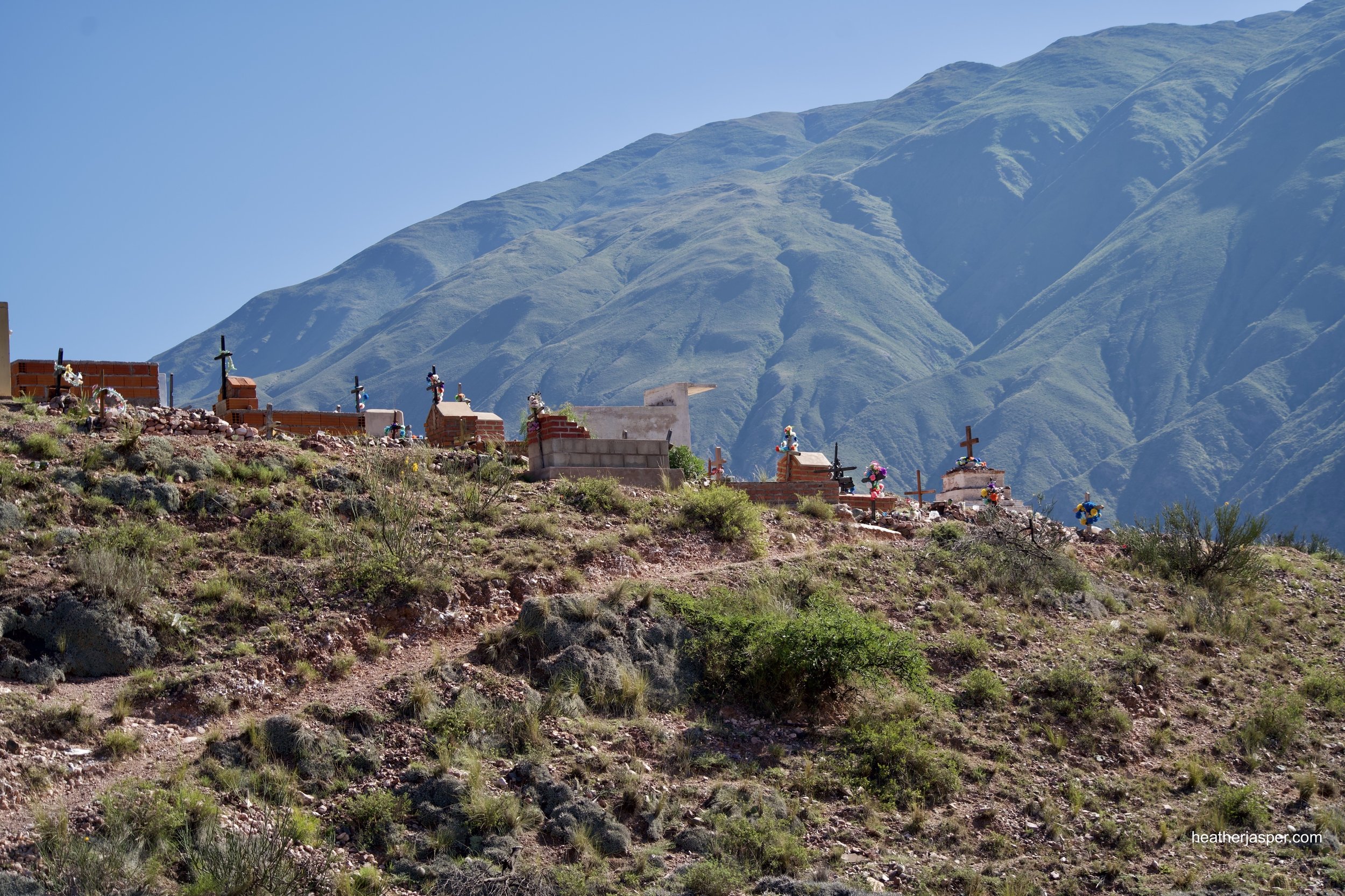
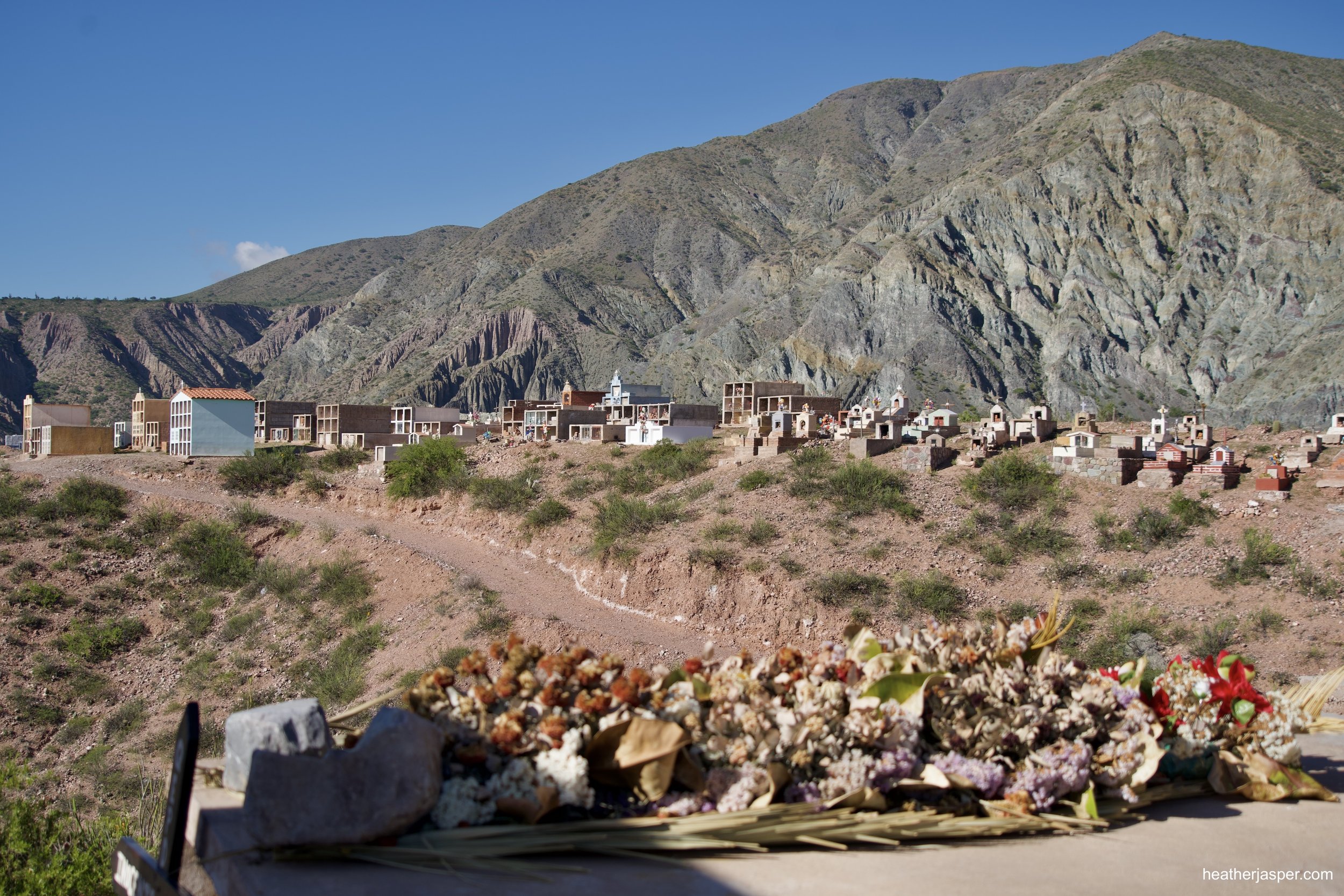

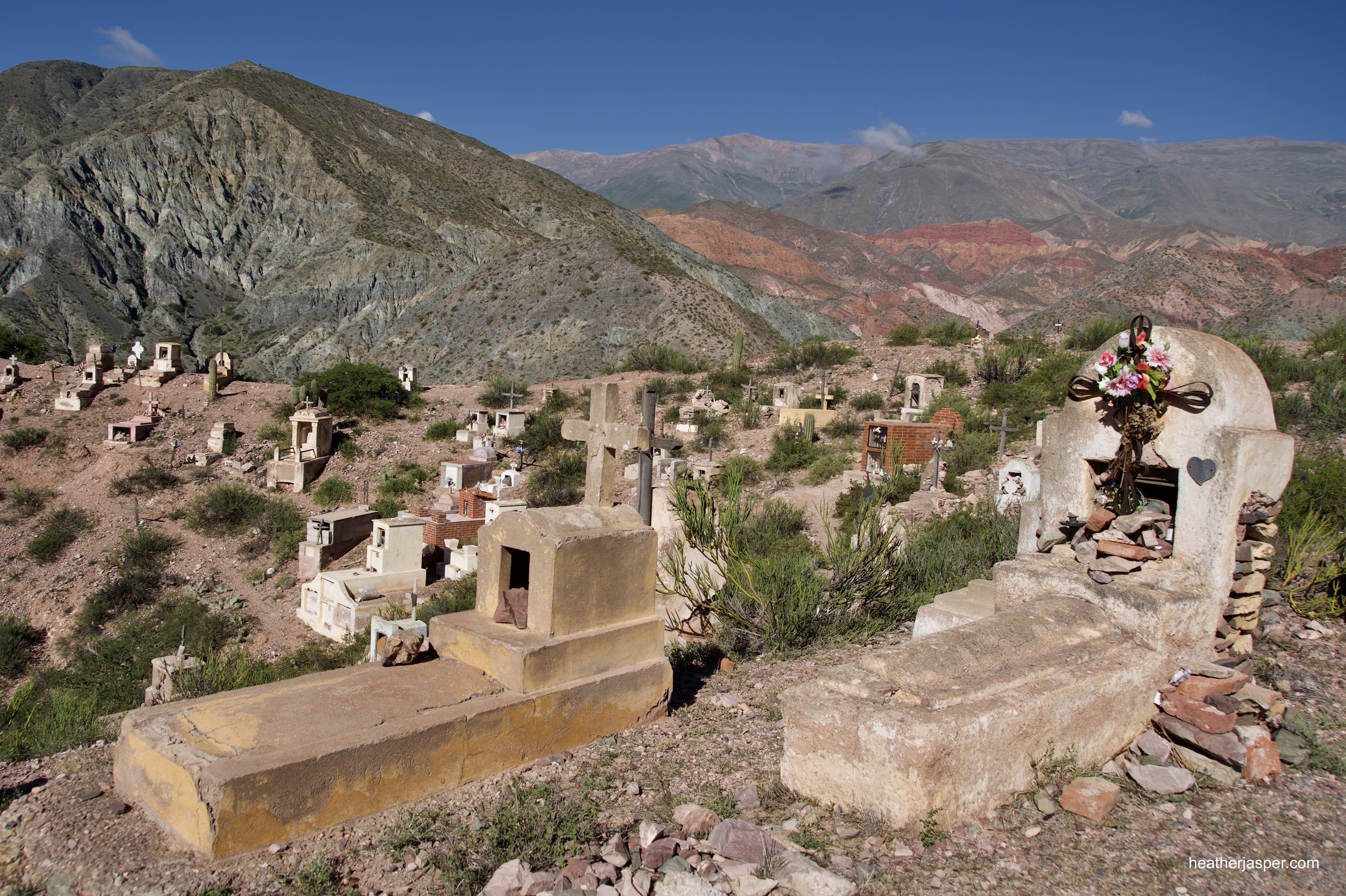
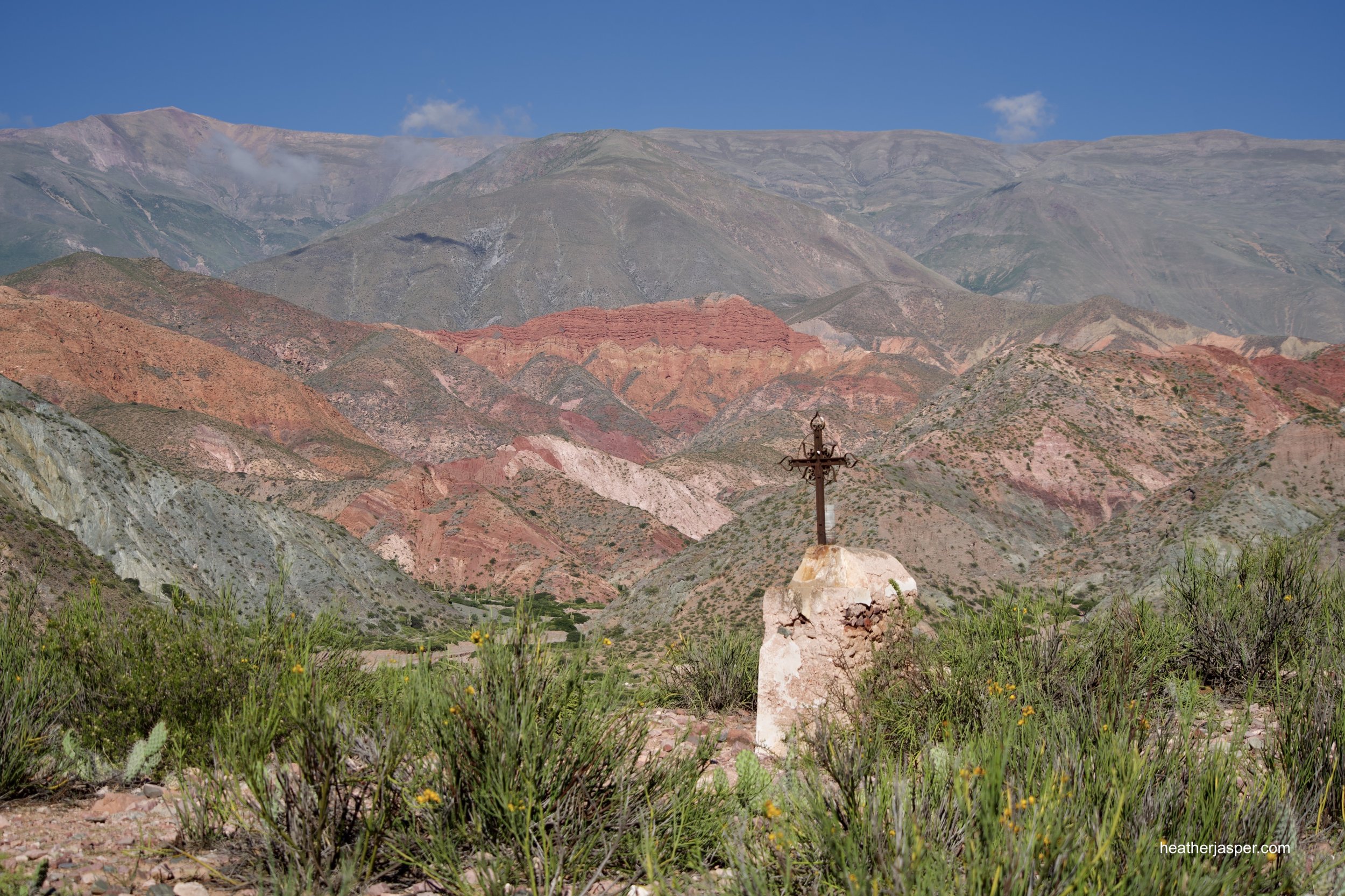
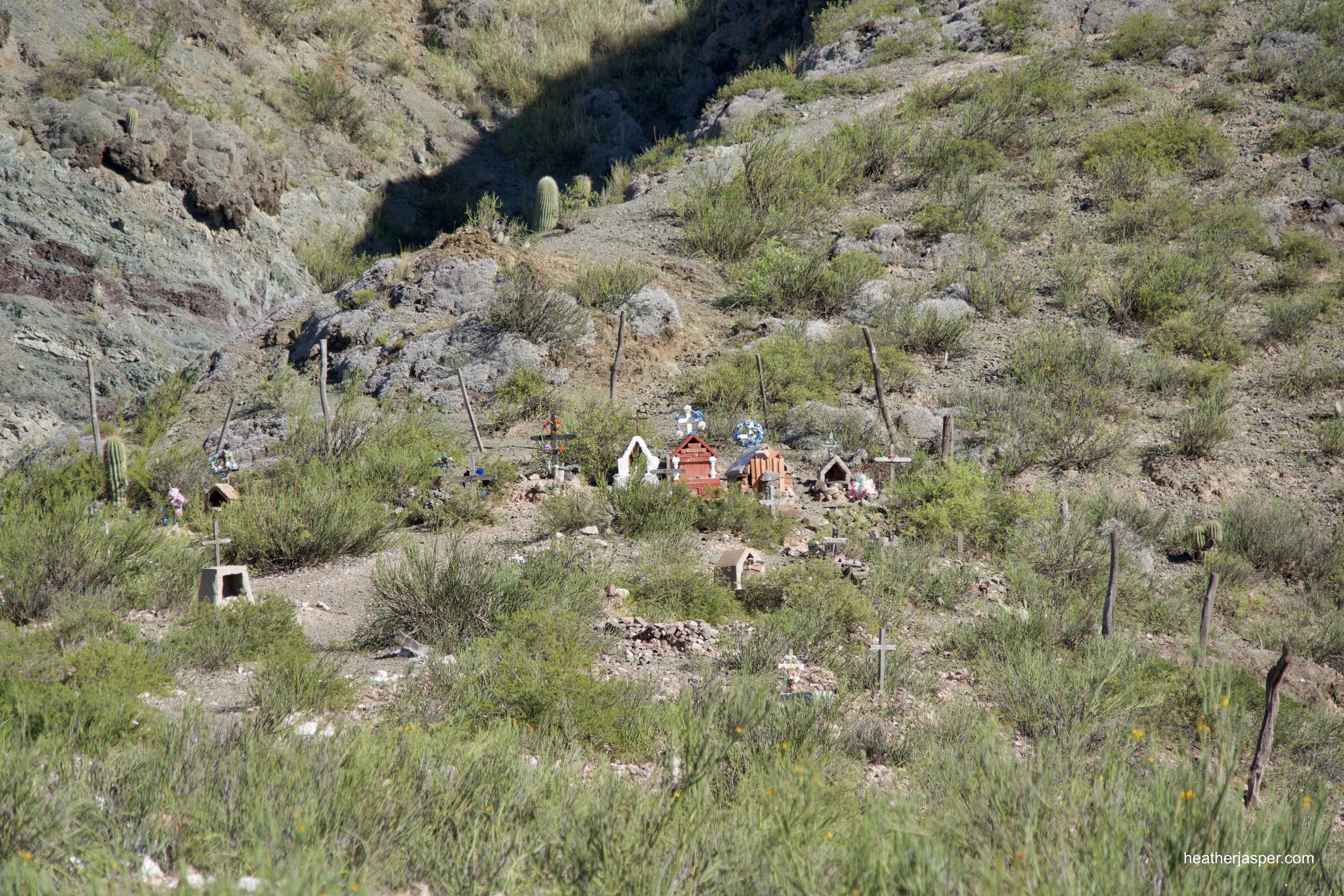

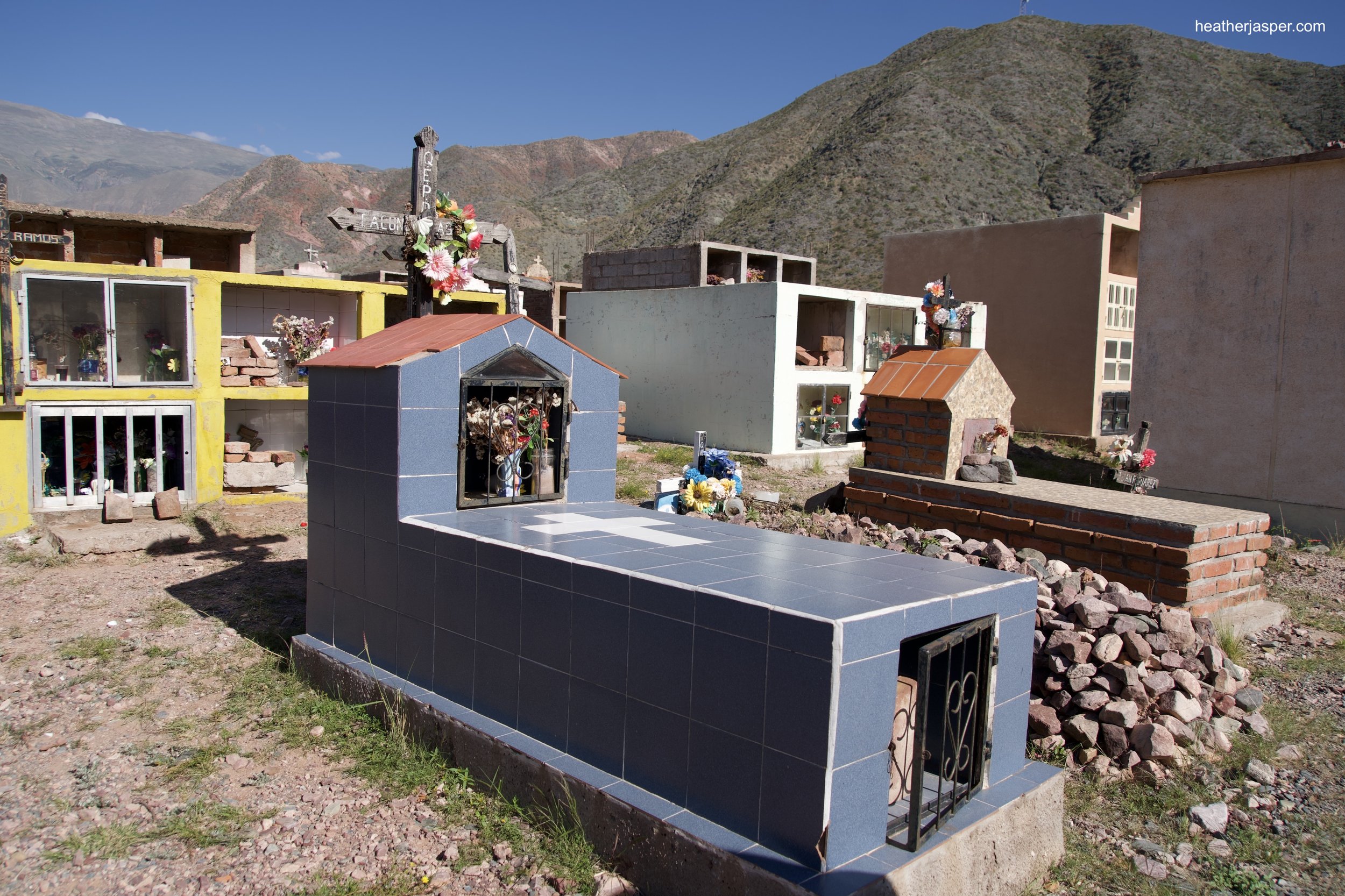
Celestina told me about her current projects.
When she’s not working on her dream of opening a tea house where she can serve cakes made of purple corn and white chocolate, she’s working on the legal side of the property title fight. Unfortunately, the Catholic priests who helped during the 1990s no longer live in Tumbaya. The church isn’t paying for lawyers and legal fees anymore. Celestina might not be fighting as big a battle as she did thirty years ago, but she has a lot less help this time around.
We went for another walk along the ridge above town where generations of Tumbayans have been buried, overlooking the valley. The graves are visible from just about every point in the small town, which is backed up against the hills, leaving the flat land at the center of the valley free for farming. Many of the graves are so old that the names and dates have long been lost. One such grave is known as a local saint who grants miracles, though Celestina told me nobody knows who is buried there anymore.
Celestina showed me some of her relatives’ graves, including her mother’s. When I met Celestina, she was in mourning for her mother who had passed away only a week before. She put on a smile for me every day, but I wondered where she was at in the grieving process. It couldn’t have been easy to welcome a stranger to her home during such a difficult time.
Just about everything Celestina has done throughout her life took enormous amounts of strength, determination, and fortitude. I truly admire how she stays optimistic and positive despite the adversity she faces at every turn.
La Casa de Celestina
Contact Celestina on WhatsApp to book a medicinal herb workshop, learn about Tumbaya’s history or to help the families of Tumbaya get titles to their property.
Celestina +54 9 3885 73 8122
















